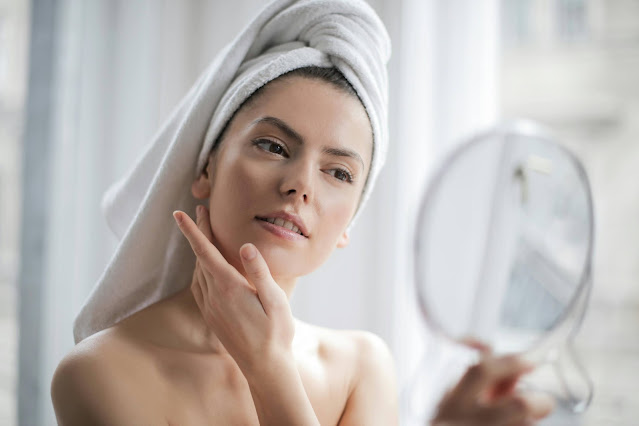**Advanced Clinical Guide to Melasma and Hyperpigmentation Treatment**
---
**Introduction**
Melasma and hyperpigmentation are complex pigmentary disorders requiring patient-specific, evidence-based dermatologic management. These conditions, marked by aberrant melanin deposition, primarily affect sun-exposed areas and are especially prevalent among individuals with Fitzpatrick skin types III–V—particularly within Indian, Southeast Asian, and Middle Eastern populations. Although not medically dangerous, they carry a substantial psychological and social impact, particularly in cultural environments where skin tone is closely associated with perceptions of beauty, social mobility, and self-worth.
This guide synthesizes current dermatologic strategies, spanning topical, systemic, procedural, and lifestyle-based interventions, to offer a holistic and culturally competent framework for treatment.
---
**I. Pathophysiology and Etiological Insights**
Melasma is a chronic, relapsing dermatosis governed by genetic susceptibility, ultraviolet (UV) radiation, hormonal stimuli (notably estrogen and progesterone), and inflammatory mediators. On a molecular level, melanogenesis is modulated by tyrosinase activity, reactive oxygen species, and pro-inflammatory cytokines, often resulting in melanocyte hyperactivity without cellular proliferation.
Post-inflammatory hyperpigmentation (PIH), a closely related condition, typically arises from trauma or inflammation such as acne, eczema, or dermatitis. Unlike neoplastic conditions, melanocytes remain structurally unaltered but hyperfunctional.
---
**II. Clinical Presentation and Morphological Features**
* **Melasma**: Manifests as symmetrical, irregularly bordered macules or patches, commonly located on the centrofacial, malar, and mandibular regions.
* **PIH**: Develops at prior sites of inflammation and may range from brown (epidermal) to blue-grey (dermal) in appearance, depending on pigment depth.
Both conditions may coexist and evolve based on environmental exposure and patient habits.
---
**III. Dermatologic Evaluation and Diagnostic Modalities**
Comprehensive patient history and visual inspection form the diagnostic foundation. Adjunctive tools include:
* **Wood’s Lamp Examination**: Distinguishes epidermal from dermal pigmentation.
* **Dermoscopy**: Assesses vascular and pigment network changes.
* **Reflectance Confocal Microscopy**: Enables non-invasive, in vivo visualization of cellular architecture.
* **Histopathology**: Reserved for atypical cases or when malignancy is suspected.
---
**IV. Pharmacologic Interventions**
Topical depigmenting agents represent first-line therapy:
* **Hydroquinone (2–4%)**: Gold-standard tyrosinase inhibitor. Requires monitoring for exogenous ochronosis with prolonged use.
* **Triple Combination Cream (TCC)**: Hydroquinone + Tretinoin + Mild corticosteroid; enhances efficacy and limits irritation.
* **Azelaic Acid (15–20%)**: Suppresses DNA synthesis in melanocytes, suitable for sensitive skin.
* **Kojic Acid, Arbutin, Liquorice Extract**: Botanical tyrosinase inhibitors, often included in adjunctive cosmeceuticals.
* **Topical Retinoids (e.g., Adapalene, Tretinoin)**: Facilitate epidermal turnover and pigment dispersion.
For recalcitrant cases:
* **Oral Tranexamic Acid (250 mg BID)**: Inhibits plasminogen activation, reducing UV-stimulated melanogenesis. Requires thrombosis risk screening.
---
**V. Procedural Dermatology: Adjunctive and Advanced Interventions**
When topical monotherapy is insufficient, the following may be employed:
* **Chemical Peels**: Agents such as glycolic acid (20–70%), salicylic acid (20–30%), and mandelic acid remove superficial pigmentation. Photoprotection is essential post-treatment.
* **Laser Therapies**: Low-fluence Q-switched Nd\:YAG (1064 nm) and fractional non-ablative lasers target melanin chromophores. Reserved for carefully selected patients to avoid post-procedural hyperpigmentation.
* **Microneedling with Tranexamic Acid or Vitamin C**: Enhances dermal absorption and improves epidermal pigmentation through mechanical stimulation.
Each modality demands precise calibration, operator expertise, and informed consent.
---
**VI. Lifestyle Modifications and Photoprotection**
Photoprotection is indispensable. Recommendations include:
* Daily use of broad-spectrum sunscreen (SPF ≥50, PA+++) with physical blockers (e.g., zinc oxide).
* Reapplication every 2–3 hours during sun exposure.
* Use of wide-brimmed hats, sunglasses, and protective clothing.
* Avoidance of peak UV hours (10 a.m. to 4 p.m.).
Patients should also reduce exposure to known triggers like excessive heat, emotional stress, and hormonal therapies. Psychosocial counseling may be beneficial in patients experiencing body image disturbances or depressive symptoms.
---
**VII. Sociocultural Dimensions in the Indian Context**
Pigmentary disorders in India intersect significantly with colorism. Patients often seek fairness over health, complicating therapeutic relationships. Dermatologists must adopt an ethical, empathetic approach—focusing on skin clarity, health, and long-term outcomes rather than unrealistic ideals.
*Case Highlight*: **Dr. Ramesh Iyer**, a schoolteacher from rural Maharashtra, experienced severe PIH secondary to chronic acne. Through a 9-month regimen comprising TCC, serial chemical peels, and disciplined sun avoidance, he saw substantial improvement. His regained confidence not only transformed his self-image but also improved classroom engagement. Such stories exemplify the transformative power of comprehensive dermatologic care.
---
**VIII. Prognosis and Maintenance**
Complete clearance is rarely permanent due to melasma’s relapsing nature. Epidermal lesions show faster improvement than dermal or mixed types. Maintenance therapy—typically with non-hydroquinone agents and sun protection—is vital. Patient education, regular follow-up, and lifestyle continuity are central to sustained outcomes.
---
**Recommended Visual Enhancements**
* **Infographic**: Comparative efficacy of topicals, peels, and lasers.
* **Flowchart**: Stepwise clinical decision tree for melasma management.
* **Before-and-After Gallery**: Consented clinical images showcasing diverse skin tones.
* **Motivational Banner**: Quote: *“Healthy skin is a journey, not a destination.”*
---
**Conclusion**
Effective treatment of melasma and hyperpigmentation necessitates a multi-dimensional, culturally informed approach. By combining rigorous clinical methods with psychosocial sensitivity, dermatologists can deliver both cosmetic enhancement and emotional well-being. Long-term success hinges on therapeutic consistency, patient education, and the ethical communication of realistic expectations.
---
**Call to Action**
If you're struggling with melasma or dark spots, consult a board-certified dermatologist today. Start a science-backed, personalized skin journey that respects your individuality. Explore our comprehensive patient guide and access dermatologist-recommended products curated for Indian skin.
Glow responsibly. Shine confidently. Protect your skin for life.





No comments:
Post a Comment